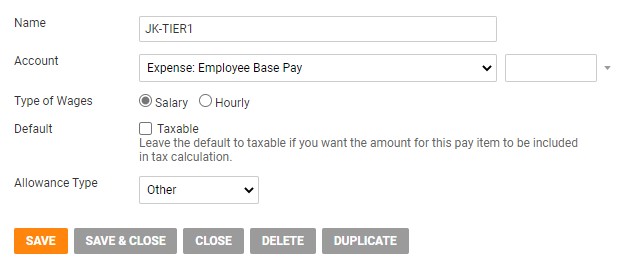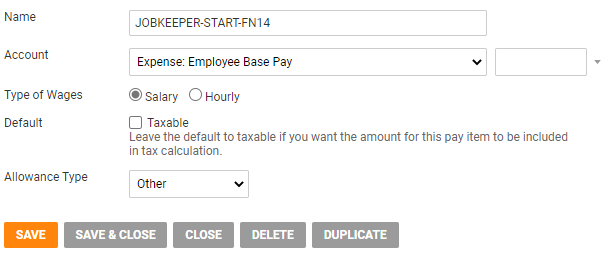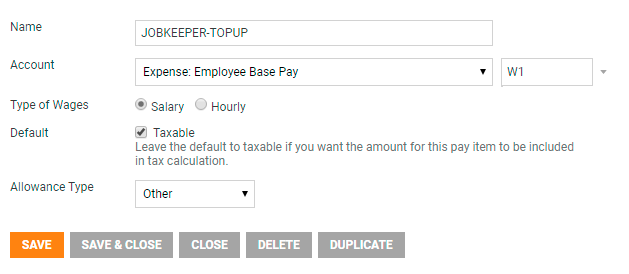For detailed information on how Employers should enroll and manage JobKeeper payments please refer to the ATO guidance at JobKeeper Payment > Employers.
For detailed information on extended JobKeeper payment period from 28th Sep 2020 to 28th March 2021 and employer eligibility requirements please refer to the ATO guidance at JobKeeper Payment Extension.
Further information may come to hand from the ATO as they complete their process for managing this initiative. We will post updates on this page.
JobKeeper Extension Payment
The government has extended the JobKeeper payment subsidy from 28th Sep 2020 to 28th March 2021 and has introduced two JobKeeper extension periods with tiered payment rates for each period.
- Extension Period 1 – 28 September 2020 to 3 January 2021
- Tier 1: $1,200 per fortnight (before tax)
- Tier 2: $750 per fortnight (before tax).
- Extension Period 2 – 4 January 2021 to 28 March 2021
- Tier 1: $1,000 per fortnight (before tax)
- Tier 2: $650 per fortnight (before tax).
To check for employer eligibility for JobKeeper extension payments for the extended period and to determine which payment tier your employees belong to please visit https://www.ato.gov.au/jobkeeperextision
Reporting JobKeeper Extension Payments to the ATO
Set up the payment tiers
If you are using STP reporting in Saasu to notify eligibility of an employee for JobKeeper payments from 28 Sep 2020, you will need to setup the payment tier pay items first
- Click on View > Payroll > Setup Pay Items
- Click Add: Wage and Salary
- Allowance Type – “Other”
- Name – “JK-TIER1”

- Repeat above steps to add pay item “JK-TIER2”
Set up the Fortnight start pay item
For any employee that becomes eligible for JobKeeper payments for the first time within the extended periods, you need to report the payment start fortnight for the employee. If you have already reported the start fortnight for an employee before 28th Sep 2020, and you continue to pay JobKeeper payments to them you do not need to report the start fortnight.
- Click on View > Payroll > Setup Pay Items
- Click Add: Wage and Salary
- Allowance Type – “Other”
- Name – “JOBKEEPER-START-FNXX”, where “XX” refers to the fortnightly period from which the payment first started e.g. JOBKEEPER-START-FN14 refers to the 14th fortnight period of JopbKeeper payments

- This allowance pay item only needs to be used once per employee to indicate when the JobKeeper payments started. You do not post the JOBKEEPER-START-FNXX pay item every pay.
- Use the following table to determine the allowance pay item to set up and use depending on when the employee became eligible/ineligible for the JobKeeper payment.
- It is important the pay item name is in the exact format as below for the corresponding fortnight, and the type is set to “Other”. This is the format expected by the ATO.
| Fortnight | Dates | Allowance Name(payment start) | Allowance Name(payment end) |
| 14 | 28/09/2020 – 11/10/2020 | JOBKEEPER-START-FN14 | JOBKEEPER-FINISH-FN14 |
| 15 | 12/10/2020 – 25/10/2020 | JOBKEEPER-START-FN15 | JOBKEEPER-FINISH-FN15 |
| 16 | 26/10/2020 – 08/11/2020 | JOBKEEPER-START-FN16 | JOBKEEPER-FINISH-FN16 |
| 17 | 09/11/2020 – 22/11/2020 | JOBKEEPER-START-FN17 | JOBKEEPER-FINISH-FN17 |
| 18 | 23/11/2020 – 06/12/2020 | JOBKEEPER-START-FN18 | JOBKEEPER-FINISH-FN18 |
| 19 | 07/12/2020 – 20/12/2020 | JOBKEEPER-START-FN19 | JOBKEEPER-FINISH-FN19 |
| 20 | 21/12/2020 – 03/01/2021 | JOBKEEPER-START-FN20 | JOBKEEPER-FINISH-FN20 |
| 21 | 04/01/2021 – 17/01/2021 | JOBKEEPER-START-FN21 | JOBKEEPER-FINISH-FN21 |
| 22 | 18/01/2021 – 31/01/2021 | JOBKEEPER-START-FN22 | JOBKEEPER-FINISH-FN22 |
| 23 | 01/02/2021 – 14/02/2021 | JOBKEEPER-START-FN23 | JOBKEEPER-FINISH-FN23 |
| 24 | 15/02/2021 – 28/02/2021 | JOBKEEPER-START-FN24 | JOBKEEPER-FINISH-FN24 |
| 25 | 01/03/2021 – 14/03/2021 | JOBKEEPER-START-FN25 | JOBKEEPER-FINISH-FN25 |
| 26 | 15/03/2021 – 28/03/2021 | JOBKEEPER-START-FN26 | JOBKEEPER-FINISH-FN26 |
Assign the payment tier to employees
- All employees receiving JobKeeper payments need to have the payment tier set in their default pay from 28th Sep 2020. The payment tier needs to be reported to the ATO each and every pay.
- Go to View > Employees and click on the edit icon for the employee in the list.
- Click on Default Pay tab and select the appropriate JK-TIERX pay item (where X is tier 1 or 2 depending on which tier employee belongs to) under Wages and Salaries.

Assign payment start fortnight to employees
- If an employee has become eligible for JobKeeper payment for the first time, you need to report the payment start fortnight.
- Example: an employee falling into Tier 1 payment rate is paid $2400 fortnightly via a pay run and becomes eligible for JobKeeper payment on the 14th Oct 2020. Pay date is 20th Oct;
- Create the JOBKEEPER-START-FN15 allowance pay item (of allowance type “Other”) if not already created.
- Go to View > Employees. Find the employee in the list and click on the Next Pay icon. Under Wages and Salaries, select JOBKEEPER-START-FN15 pay item.
- Click Save and Close.

- When the next pay run is approved and the pay entry is created for the employee, the JOBKEEPER-START-FN15 will be included in the pay. When the employer submits the STP pay event consisting this pay to the ATO this allowance pay item will be reported to notify the JobKeeper payment for the employee started from the 15th fortnight.
- Note for manual pay i.e. employee is not paid through a pay run, add the allowance pay items JK-TIERX and JOBKEEPER-START-FNXX when creating the payroll entry and enter 0.01 cents as the amounts against each as unfortunately the manual payroll entries will not allow a $0.00 amount.
- When an employee becomes ineligible for the JobKeeper payment, the allowance pay item JOBKEEPER-FINISH-FNxx should be used to notify the ATO when the eligibility ceased. For example, if the employee becomes ineligible on 02 Jan 2021, use the allowance pay item JOBKEEPER-FINISH-FN21 (the fortnight from which the subsidy will no longer apply).
JobKeeper payment top up amounts
- For all payroll cycles, the employer is required to pay the minimum amount based on the payment tier for each fixed JobKeeper fortnightly period.
- If you have employees earning less than the minimum payment tier amount a fortnight, you need to top up their salary to meet the minimum payment amount requirement to remain eligible.
- In order to notify the ATO of the top up amount, create an Allowance pay item of type Other with the name “JOBKEEPER-TOPUP”, and use this pay item to record the top up amount in employee’s pay.
- It is important the pay item is named exactly as JOBKEEPER-TOPUP and the allowance type is set as “Other”. This is the format expected by the ATO.

- Open the Employer Contribution pay item for SGC and select “Exclusions” link and tick this pay item to exclude it from SGC calculations.
- This allowance pay item needs to be included in all future pays with the top up amount to ensure the employee meets the eligibility criteria.
- Example: an employee is getting paid $1000 a fortnight via pay run and becomes eligible for JobKeeper payment on the 27th Oct and the next pay is due on the 30th Oct. The employer works out the employee belongs to payment tier 1, and therefore their pay needs a top up of $200.
- Create the JOBKEEPER-START-FN16 allowance pay item (of allowance type “Other”) if not already created.
- Create the JOBKEEPER-TOPUP allowance pay item (of allowance type “Other”) if not already created.
- Create the JK-TIER1 allowance pay item (of allowance type “Other”) if not already created.
- Go to View > Employees and click on the edit icon for the employee in the list.
- Switch to the Default Pay tab and select JOBKEEPER-TOPUP pay item under Wages and Salaries, and enter $200 which is the top up amount to increase the employee’s regular pay to the minimum required amount of $1200 (Extension period 1, payment tier 1). Make sure JK-TIER1 pay item is also selected since the employee belongs to payment tier 1 in the extended period.
-

- Click on Save and Close.
- Click on the Next Pay icon adjacent to the employee in the list.
- Under wages and Salaries, select JOBKEEPER-START-FN16 pay item.

- Click on Save and Close.
- When the pay run is approved and the payroll entry is created for 30th May for the employee;
- JOBKEEPER-START-FN16 pay item will be included in the pay.
- JK-TIER1 pay item will be included in the pay.
- JOBKEEPER-TOPUP pay item will be included in the pay for the top up amount.
- When this pay is reported via STP the ATO gets notified the JobKeeper payment for the employee started from the 16th fortnight, it is a Tier 1 payment and a top up amount of $200 was paid to meet the eligibility criteria.
- Note for manual pay i.e. employee is not paid through a pay run, add the allowance pay items JK-TIERX and JOBKEEPER-START-FNXX when creating the payroll entry and enter 0.01 cents as the amounts against each as unfortunately the manual payroll entries will not allow a $0.00 amount.
JobKeeper payment corrections
- If pays were already completed without the JK-TIERX or JOBKEEPER-START-FNXX code, either create an out of cycle pay (Add > Payroll), or add these into the next regular cycle. Please do not delete your existing pay runs and try to replace these through Single Touch Payroll
- Employee eligibility
- If a wrong employee was reported as eligible using JOBKEEPER-START-FNXX, then cancel this employee’s eligibility in next regular pay cycle by reporting the matching JOBKEEPER-FINISH-FNXX e.g. reported JOBKEEPER-START-FN14, cancel it by reporting JOBKEEPER-FINISH-FN14
- If a wrong employee was reported as ineligible using JOBKEPER-FINISH-FNXX, then cancel this by reporting the matching JOBKEEPER-START-FNXX in next regular pay cycle e.g. reported JOBKEEPER-FINISH-FN16, cancel it by reporting JOBKEEPER-START-FN16
- If an employee’s payment tier was reported incorrectly;
- If an employee was reported as Tier 1 incorrectly and they should be Tier 2, then replace the pay item JK-TIER1 in the next pay cycle with JK-TIER2.
- If an employee was reported as Tier 2 incorrectly and they should be Tier 1, then replace the pay item JK-TIER2 in the next pay cycle with JK-TIER1.
- Please note this correction cannot be done multiple times, so ensure the correct payment tier is determined before assigning one to an employee.
- If an employee’s JobKeeper payment eligibility start fortnight was reported incorrectly;
- as a later fortnight, then report the correct fortnight in the next regular pay cycle e.g. reported JOBKEEPER-START-FN03 (incorrect) as start fortnight. Report JOBKEEPER-START-FN01 (correct) in the next regular pay cycle for the employee.
- as an earlier fortnight, then cancel this by reporting the matching finish fortnight, and report the correct start fortnight e.g. reported JOBKEEPER-START-FN01 (incorrect). In the next regular pay cycle report JOBKEEPER-FINISH-FN01 and also the the correct start fortnight.
- If an employee’s JobKeeper payment eligibility finish fortnight was reported incorrectly;
- as a later fortnight, then report the correct fortnight in the next regular pay cycle e.g. reported JOBKEEPER-FINISH-FN03 (incorrect) as finish fortnight. Report JOBKEEPER-FINISH-FN01 (correct) in the next regular pay cycle for the employee.
- as an earlier fortnight, then cancel this by reporting the matching start fortnight, and report the correct finish fortnight e.g. reported JOBKEEPER-FINISH-FN03 (incorrect). In the next regular pay cycle report JOBKEEPER-START-FN03 and also the the correct finish fortnight.
- Any future dated start fortnights will be ignored by the ATO. The start fortnight should not be greater than the pay date reported via STP.
- Any finish fortnights greater than the next JobKeeper reporting fortnight are ignored e.g. next JobKeeper fortnight is 07 but reported finish fortnight is 09.